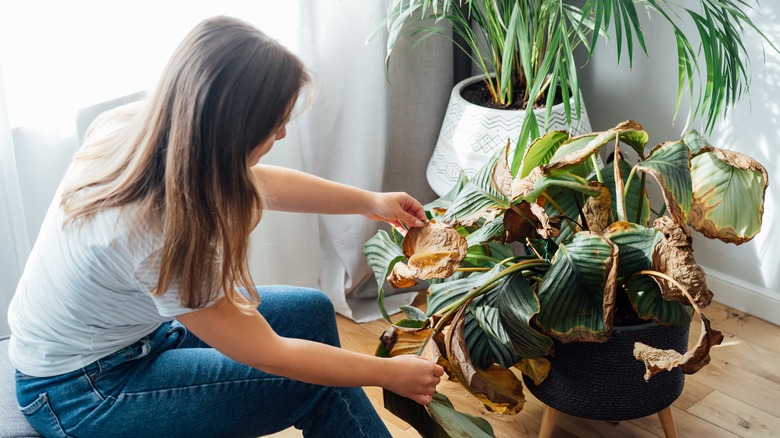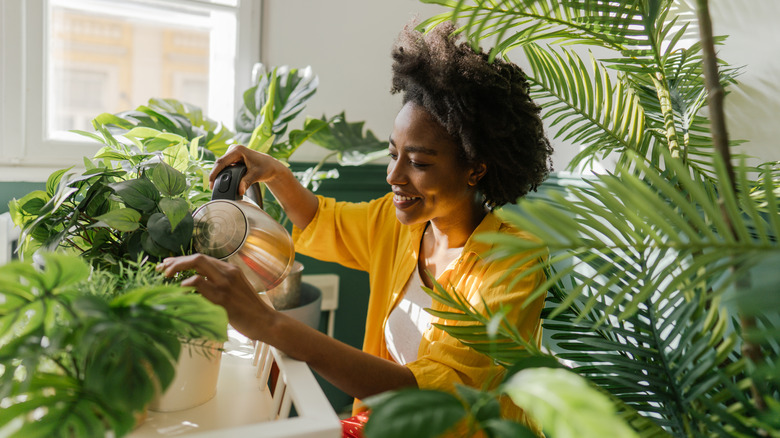The Simple Watering Mistake That's Killing Your Potted Houseplants
There are few things more upsetting than a dead houseplant, especially if you don't know what went wrong. Maybe your plant looks like it suffered from underwatering, but you can't imagine how that could be possible since you've made sure to water it regularly and even saw water draining from the bottom. If that's the case, your plant may have succumbed to the infamous gap of death.
Even though potting mixes are designed to hold water, many can become shockingly hydrophobic or water-repellent when they are fully dry. This is especially an issue with mixes with significant amounts of peat moss. The dry compacted soil may even pull away from the sides of the planter, creating a gap. This means that instead of being absorbed by the soil, water can easily just run through the gap between the compacted soil and the side of the pot, preventing your plant's roots from receiving any hydration but giving you the impression your plant is fully watered.
Fixing the gap of death
This gap that forms between your plant's dry soil and its container has been dubbed the "gap of death" by Mandi Gubler of Happy Happy Houseplant. Luckily, Gubler didn't just come up with a memorable name for this phenomenon; she also has plenty of practical advice on how to quickly fix the problem. Since the gap of death is caused by compacted and hydrophobic soil that doesn't easily accept water, just pouring more water into the top of your planter won't do the trick. Instead, the best way to deal with the gap of death is through bottom watering – just make sure your pot has a drainage hole.
Submerge the bottom several inches of your dried-out plant and its container in a bucket of cool water and leave it there for at least half an hour. This should allow the soil to slowly absorb the water and fully rehydrate. If your plant quickly begins to recover, then you can be confident that the only thing it was suffering from was insufficient access to water. By preventing your potting mix from fully drying out again, you should be able to prevent the gap of death going forward. Just remember that some plants, like cacti and succulents, need to be allowed to fully dry out in between waterings.
Preventing the gap of death in the first place
Because the gap of death is caused by compacted soil that isn't absorbing water, the best way to prevent it is to ensure your plant's growing medium never becomes that dry. How often indoor plants should be watered depends on several factors including the type of plant and the size of the container, so there isn't a one-size-fits-all answer. Poking your finger a few inches into the soil to check if it's dry or lifting your plant to feel its weight are both good strategies to check if your plant is running low on water.
If your plant appears to be perpetually in need of water, it could be a sign that it's ready to move to a larger container. Consider looking into self-watering planters as well, so your plant has easy access to consistent moisture. These systems generally have a well of water at the bottom that slowly wicks into the soil where the plant is growing, permanently saving you and your plant from the gap of death.

